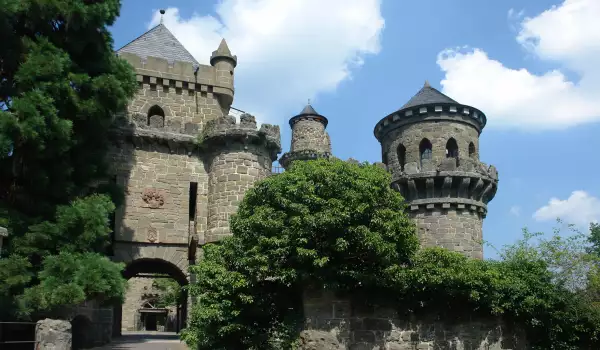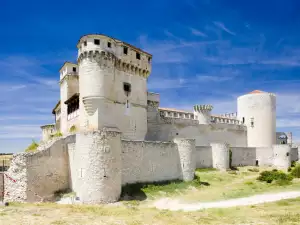Lowenburg Castle

Lowenburg Castle or Castle of the lion seems like it is out of the fairy tales and is beautiful with its numerous sharp towers. Lowenburg reminds us a lot about the world of Walt Disney, respectively, to conquer Neuschwanstein, it is perched on the 92-meter hill in the Bavarian Alps and is a popular emblem of the company's children's films. Experts say the castle Lowenburg is one of the most important palace buildings and was the first major Neo-gothic building in Germany.
Of course, Lowenburg radically differs from the magnificent Neuschwanstein in terms of architecture but this does not mean it is less dramatic and beautiful. Today Lowenburg is a fake castle surrounded by ruins, but still offers an unparalleled trip back in time.
Lowenburg Castle rises within Wilhelmshöhe Hill Park at one end of the German city of Kassel. In fact, Lowenburg or lion's castle was built on the orders of Wilhelm IX from Hessen Kassel, who lived between 1743 to 1821. Castle Lowenburg was erected for a period of eight years between 1793 and 1801.
Lowenburg is the work of the private royal inspector of buildings - Heinrich Christoph Jussow. He was an architect with solid knowledge gained from his work in France, Italy and England. Heinrich went to the island specifically to study the English romantic ruins in order to build a great garden for Lowenburg .

Indeed Lowenburg is the central attraction within the Wilhelmshöhe Hill Park, which is something like Tokyo Disney park. The entire complex is one beautifully landscaped garden on the English model, complete with thematic areas. There you can see the Roman aqueduct counterfeiting, the fake English castle, surrounded by ruins, fake Greek temples and even fake Chinese villages.
Lowenburg and the entire complex around it constitutes one of the first such facilities in Europe, which means that Lowenburg precedes the world-famous historic castles of the 19th century such as Babelsburg or the creation of Mad King Ludwig II - Neuschwanstein.
In general, Lowenburg, was built by William IX, in the place where he was spending time with his mistress.















